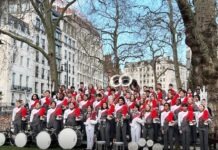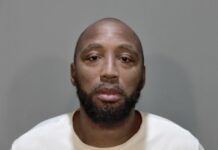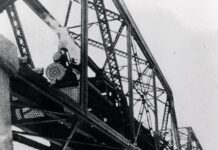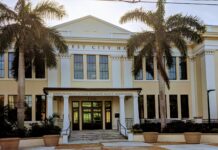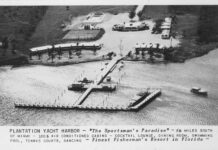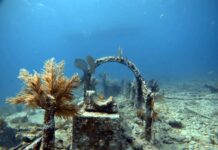
Key West Fire Chief Joseph “Bum” Farto disappeared on Feb. 16, 1976, while awaiting sentencing for a drug trafficking conviction stemming from Operation Conch – a sting operation that found Farto allegedly selling cocaine from the city’s fire station. Bum became the Jimmy Hoffa of Key West, and the island has swirled with rumors of his fate since he disappeared. David Sloan and Quincy Perkins have launched an unparalleled investigation into Chief Farto’s life, legends, and disappearance in an attempt to find the truth. Each week, they will share elements of their research here in the Key West Weekly while working to solve one of the greatest mysteries in Key West’s history.
Twenty-eight undercover agents from the Florida Department of Criminal Law Enforcement, Dade County Organized Crime Bureau, and U.S. Drug Enforcement Administration descended upon Key West on September 9, 1975. They posed as karate enthusiasts but were really in town to arrest the island’s biggest alleged drug dealers. Jose Roque, a local DEA agent, dubbed the bust “Operation Conch,” but this was far from the attempt to break up small-town corruption as reported in the news. A Cuban dictator, a Mafia boss, the Central Intelligence Agency, and the United States president played an international clandestine game of cat and mouse. Key West was just a battlefield where part of their war unfolded.
Key West’s strategic proximity to Cuba cannot be understated. The rise of Fidel Castro and the threat of communism 90 miles from the United States created networks of Cuban exiles teamed with CIA paramilitary commanders. These networks operated secret training bases throughout the Florida Keys. Grayston Lynch was one of those CIA commanders. He trained the exiles in covert operations to avoid detection while crossing the Florida Straights to launch attacks on Cuba from the Florida Keys. Lynch fired the first shot at the Bay of Pigs invasion and personally led over 100 raids against Castro in the following six years. He quit his CIA job and moved to Key West in 1971, but Lynch was far from retired. Declassified intelligence reports show that the U.S. Bureau of Narcotics Covert Intelligence Network (BUNCIN), then later, the DEA Clandestine Operations Network (DEACON), enlisted Lynch as an undercover operative. He ran a string of informants through DEACON in the Florida Keys.
Journalist Douglas Valentine conducted an extensive investigation into BUNCIN and DEACON for his book, The Strength of the Pack: The Personalities, Politics and Espionage Intrigues that Shaped the DEA. It reveals claims that CIA-trained anti-Castro exiles infiltrated the DEA on behalf of the Tampa Mafia through DEACON to protect narco-trafficking routes that funded their operations. DEACON agents eliminated competition and facilitated drug shipments benefiting Tampa Mafia boss Santo Trafficante and the CIA’s war against Fidel Castro. Those actions created friction between regular DEA agents and those of DEACON. I believe this set the stage for Operation Conch.
Grayston Lynch left Key West suddenly around August of 1975. The CIA noted in a secret document that was declassified in 2004, “Because of internal DEA politics, he was blown and left dangling on a string in Key West. He had to leave town within 24 hours and left his informants there without calling or warning them. As a result, he lost friends, prestige with his informants, many of them Cuban exiles, and his business in Key West.”
Bum Farto was set up in an Operation Conch drug sting shortly after Lynch’s cover was blown. Farto left his house on the morning of September 9, 1975, and spotted Larry Dollar and another agent dressed in suits. The chief realized he had been set up and threw the ring, which Dollar traded him for cocaine, to the ground. Bum rushed to his car and started to drive away but didn’t get far. He was the first arrest of Operation Conch.
Twenty-eight more alleged dealers went down that week, but the headlines focused on Fire Chief Farto, City Attorney Manny James, and the break-up of a crooked system of small-town corruption. The papers failed to report that most of those arrested had Cuban blood flowing through their veins. Many of them had ties to anti-Castro organizations. Some of them were linked to the Tampa Mafia. An attorney was immediately dispatched from Tampa to represent Farto, James, and some of the other accused.
The timing of this series of events begs several questions. Did Grayson Lynch facilitate drug shipments to finance a CIA war against Castro? Was Bum Farto a CIA operative? Informant? Did a DEA-CIA turf war turn the tables on Operation Conch? Could it be that Bum Farto was not a despicable drug dealer, but rather a soldier on the front lines doing whatever he could to defeat the communist threat that lurked just 90 miles from his home?
If the answer to any of these questions is yes, then the 29 people arrested in Operation Conch were just pawns in the shady politics of people like Nixon, Trafficante, and Castro. All these men cared about was winning at any cost, even if that cost was a human life. Bum was assigned a trial date, but would it be a trial by jury or a trial by fire?

